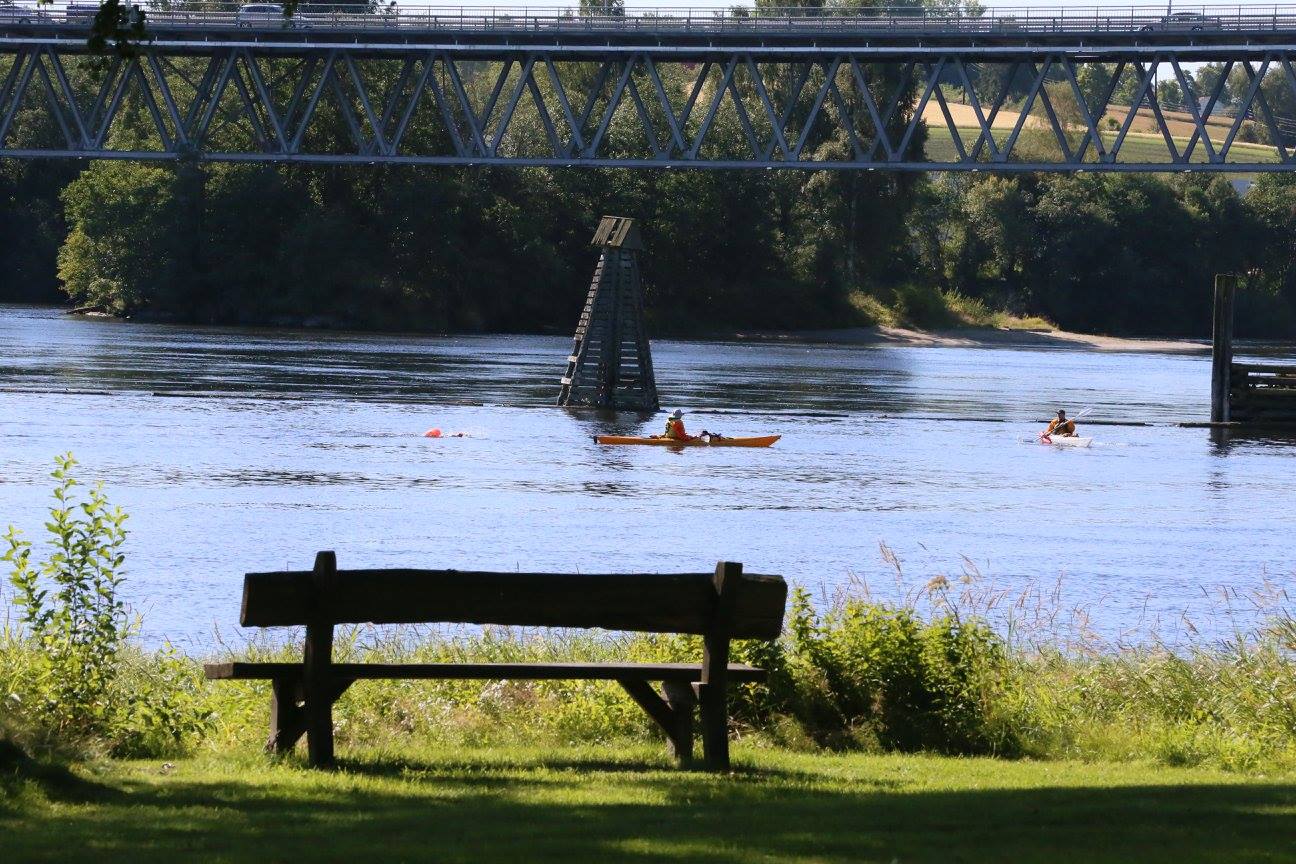
Our story
Origin
The idea emerged in an evaluation meeting after Halv-Fet Triathlon in 2015. Andres Thunheim, Espen Lorentzen, Roar A. Olsen and Silje S. Sætre met with the founder of Halv-Fet, Werner Hålien. They discussed that year’s implementation of Halv-Fet. “It would be great if we could also organize a swimming competition in Glomma”, someone said, but we don’t quite remember who. Werner and Roar went for it towards the end of August that year and swam from Guttersrud down to Fetsund Lenser. Once at the timber booms, there was a work crew who thought that the trip was completely unnecessary – after all, you can do the trip both by bus and train… But the swim was a great experinece and the idea grew further. Both Bjørnar Schau, Dag Rinden and Thomas Støvind Berg thought this sounded exciting, and during the winter of 2015/2016 a collaboration was formed between Fetsund Lenser, Fet Svømmeklubb and Sørumsand IF svømmegruppe. A golden combination in our eyes!
Our goal
The aim of GlommaDyppen is to use the old timberfloating boom of Fetsund Lenser as a sports arena. Fetsund Lenser is a national heritage monument, timberfloating museum and nature centre close to Oslo, Norway. A unique blend of cultural and natural adventures, set in beautiful scenery on the Glomma, at the gateway to Nordre Øyeren nature reserve, northern Europe’s largest inland delta. We want to become an international destination for outdoor swimming. We hope for several hundred participants during GlommaDyppen, but also that those who visit us spend time visiting great natural and cultural experiences both locally, regionally and nationally. In the long term, we plan for even more races during GlommaDyppen than the classic Loffer’n, Elvenøkken and Fløter’n.
Fetsund og Bingen Lenser
The timber booms at Fetsund and Bingen are today unique cultural monuments, as the only remaining timber booms of their kind in the world. In 1989, the approximately 2.5 km long timber booms at Fetsund was protected. The timber booms was established as a museum in 1990. Fetsund Lenser is today the largest and best visited museum within the organization “Museene i Akershus” (MiA).
Click here to learn more
In addition to the rich cultural monuments at Bingen and Fetsund timber booms, the area is also located in a very special nature area. Just below Fetsund Lenser we find northern Europe’s largest inland delta. Here the Glomma river flows into lake Øyeren. The many river courses in the delta constitues Norway’s Amazon. The area is also very species-rich both in fish and as a resting and nesting place for a number of bird species. The mix of culture and nature makes the area completely unique in Norway.
Our first race
GlommaDyppen was organized for the first time on Saturday 28 August 2016, with in a total 16 participants (6 swam 11km, Fløter’n, and 10 swam 2km, Loffer’n, which was then called Elvenøkken).
Organizers
Fetsund Lenser, Fet Svømmeklubb and Sørumsand IF svømmegruppe are responsible for the annual organization of GlommaDyppen.
The volunteers
Each year an absolutely fantastic group of volunteers help us and spend many hours on or by the river during the event. There are usually around 40-45 of us at “work” during GlommaDyppen. There are usually around 40-45 of us who are at “work” during GlommaDyppen.
Early swims at Lensene
In a time when swimming educatipn was close to unknown, there were probably many who did not master the art of swimming. But even in earlier times, there were some who swam both longer and better than most. In the floating book “Voices from the river”, published in 2012, we make acquaintances with two good swimmers: Sigurd Berg Pedersen (1903-1999) from Nerdrum in Fet and Karl Aaserud (1906-1989) from Roven in Fet. Both were long-term workers at Fetsund Lenser. Sigurd for 58 seasons! Both were described as quick-witted with a twinkle in their eye! Both were also known as skilled swimmers and divers, who often dived to the bottom of the river if something was lost. Everything from watches, glasses, money and knives were retrieved from the river by these two.
Click here to learn more
Sigurd was also known as a good diver, but perhaps even better as a swimmer. Among other things, he became known for an annual event that makes us confident that GlommaDyppen has a solid historical anchoring. For many years, Sigurd had one slightly unusual swim during one of his dinner breaks (which then lasted an hour). From the very bottom of the timber booms – which then lay further down than today, Sigurd plunged in and set off upstream along the facility. The facility is equipped with bridges where the workers stood. On the way up, Sigurd received applause from his colleagues who stood on the bridges to watch the session. The trip ended at the very top of the facility. When he had finished, he jumped up onto the raft corridors and ran in his swimming trunks through the facility and all the way down to the end again – in time for more work.
